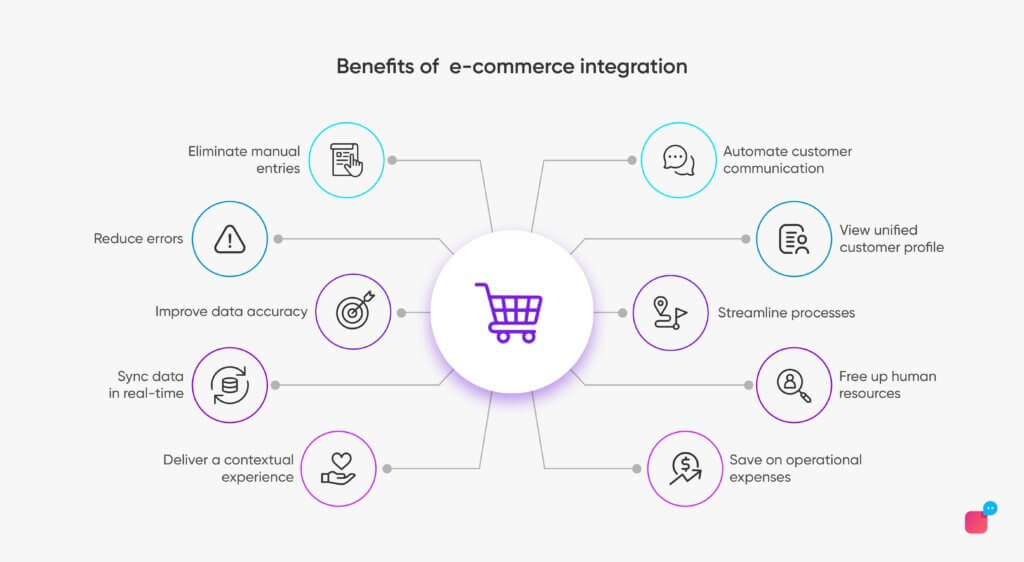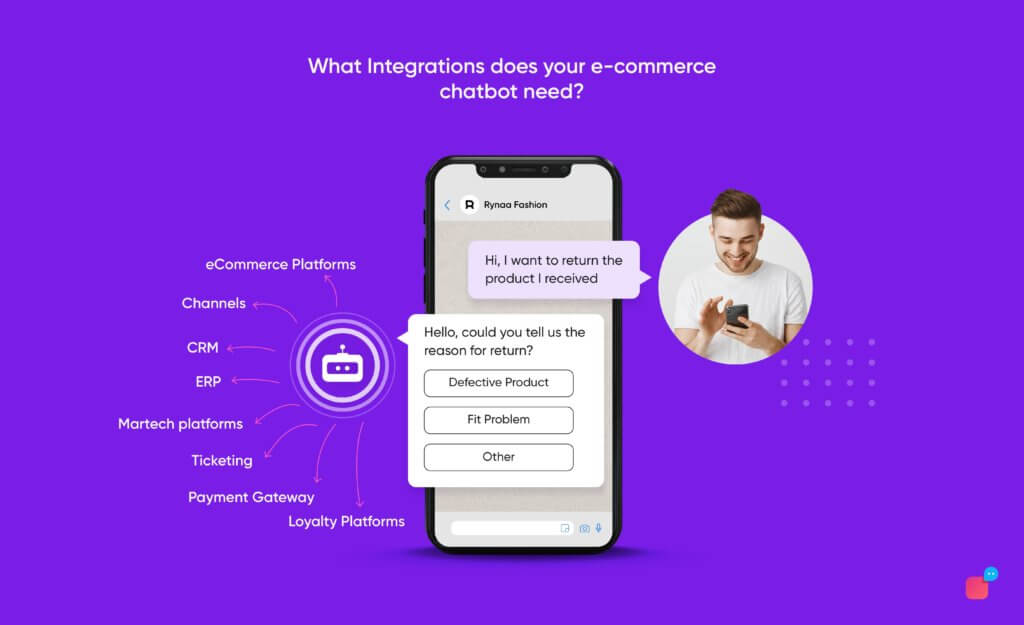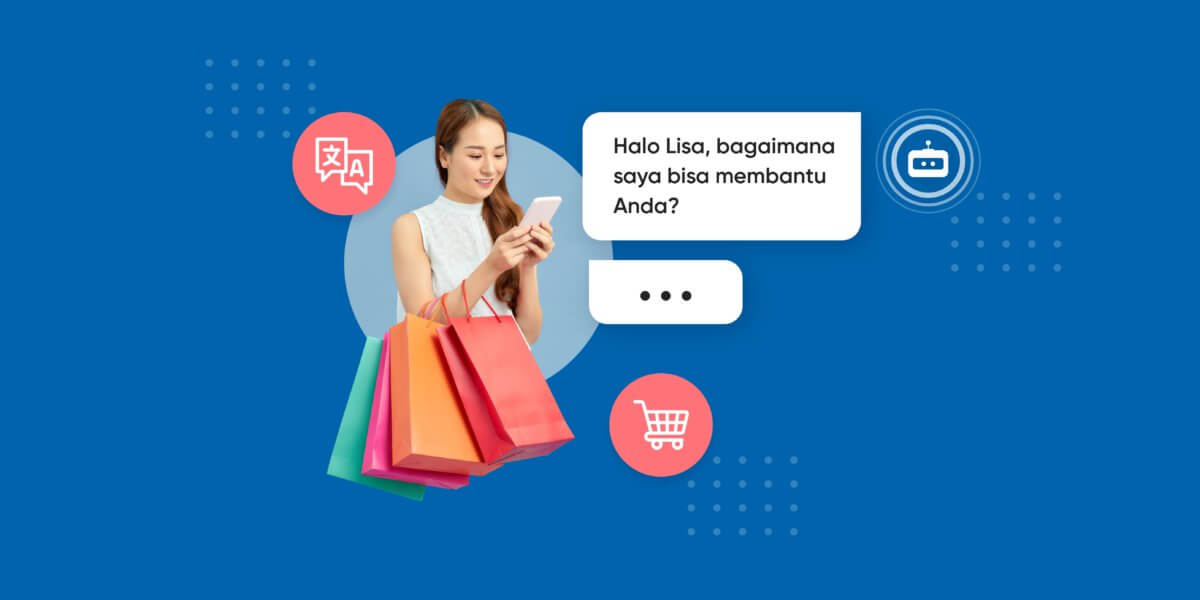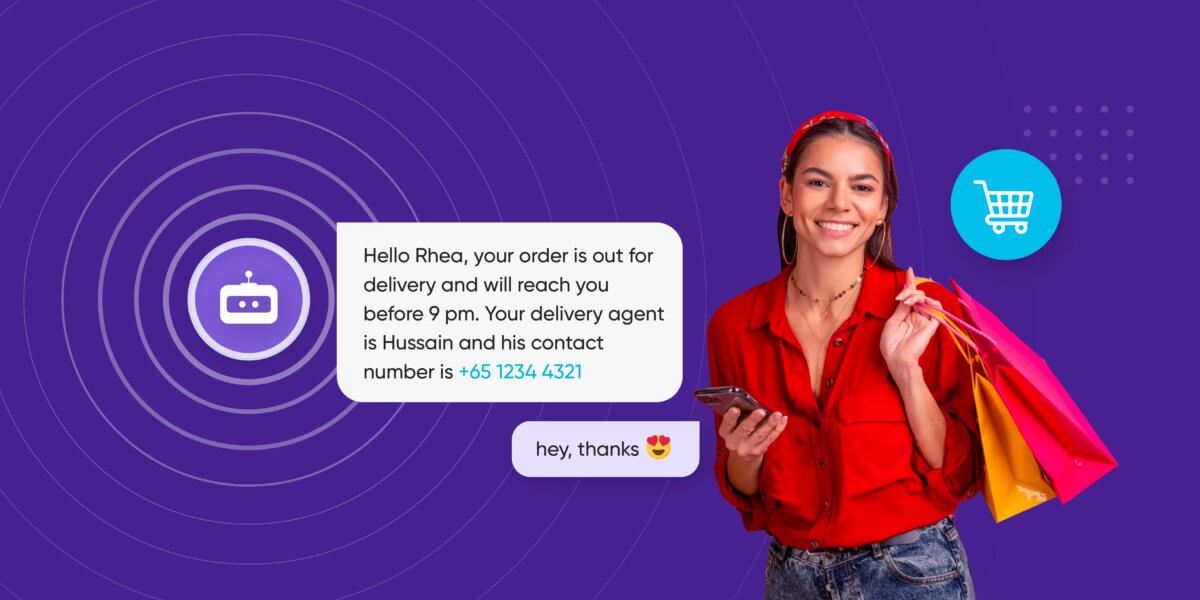Supercharge your Chatbot Conversations with These eCommerce Integrations

Supercharge your Chatbot Conversations with These eCommerce Integrations
Facebook survey shows that more than 50% of customers are more likely to shop with a business that they can connect with via chat. Juniper Research further goes on to say that by 2023, eCommerce tractions through chatbots will be $112 billion. Clearly, chatbots bring a lot of benefits to any eCommerce brand.
In the past, we’ve written about how conversational commerce and voicebots in eCommerce are on the rise and also the different use cases of eCommerce bots. Now it’s time to address the elephant in the room. How are you going to meet customers’ expectations when they interact with you on these conversational platforms?
Answer: You need to optimise your user’s experience on these chatbots and voicebots. And that’s where integrations come into the picture.
What is integration? Data integration ties data from multiple sources into a centralised source. With integration, there is a bidirectional, free flow of data that’s always up to date and available in real-time.
You can say, integration ties the front-end components of your business (that is your website, chatbot, mobile app, etc.) to the backend components (such as CRM, ERP, Payments, etc.) By integrating your eCommerce bot with your backend systems, you can operate and maintain your eCommerce functions efficiently.
What are these functions? For example, if your user is chatting with you on your WhatsApp chatbot, they can get product information, updates on shipments and orders, make payments, etc. without having to switch between different systems. Similarly, your agents get the information they need and don’t have to update the data again on other systems. eCommerce integrations also help inter-team communication, be it between support and sales or support and inventory management.
eCommerce integration example
Still confused? Let’s understand this with another example. Your business uses an ERP system such as SAP or Oracle to keep track of inventory. And you sell your product on multiple channels: store, website, social media and also WhatsApp chatbot. Now when a customer shops from any one of these channels, say through your Instagram page, thanks to the integration with Instagram API, your ERP will be updated about this progress automatically. So next time another customer tries to purchase the same product (let’s say on the website this time), the website will know if the product is still available or out of stock.
If your conversational platform is not integrated, it can lead to poor experiences. In the above example, if there was no integration and you had to update the ERP manually (which usually happens once a day), you might have found yourself in a tight situation with the customer if the product went out of stock. And we all know one bad experience is enough to lose a customer these days.
What are the benefits of eCommerce integrations?
Still not sure why you need to integrate your eCommerce chatbot with your backend systems? Let us give your 10 reasons why eCommerce integration is important. You can
- Eliminate manual and duplicate entries
- Reduce errors and improve data accuracy when exchanging data
- Sync data between all systems in real-time
- Improve speed of data exchange between multiple systems
- Deliver a contextual and consistent experience across channels of communication
- Automate customer notifications throughout customer’s buying journey
- Access and derive insights from a centralised and unified view of customer data
- Streamline processes by reducing friction and eliminating redundant steps
- Free up human resources’ time and let them focus on complex tasks
- Save on operational expenses with efficient systems and better experiences

What integrations does your eCommerce chatbot need?
Conversational AI in eCommerce makes it easy for a user to shop online by finding exactly what they are looking for with few words. Be it “where is my order?” or “change my home address” to “how to make payment with UPI” or “do you have a red backpack?”, a chatbot will give answers to almost any question, quickly and accurately. If not, it will transfer to an agent.
eCommerce bots also provide personalised recommendations and create better shopping experiences. For example, if a user has bought beige pants from an eCommerce brand, the chatbot can suggest shoes that go with it and in the size, the user had used previously.
All this magic happens through integrations. There are 8 important eCommerce integrations for conversational tools, as follows:

1. eCommerce Platforms
These are the online stores on which you are selling your products and services on. For example, Shopify, Magento, WooCommerce, BigCommerce, Dukaan, Opencart, etc. Online store integration gives thousands of visitors access to your chatbot.
eCommerce marketplace integration allows your visitors on these platforms to connect with your chatbot and get quick, accurate information through personalised and contextual conversations 24×7.
2. Channels
Social commerce is rampant because of customers’ need for instant gratification. If they see and like a product on Instagram, they want to purchase it instantly. But before that, they might have many questions about the product. Answer your prospective customer’s question right then and there by integrating your chatbot for eCommerce with multiple channels.
Multichannel eCommerce integration facilitates self-service and conversational commerce. Some of the popular eCommerce channels include online stores, Facebook, Instagram, WhatsApp, Voicebot, etc.
3. CRM
A customer relationship management (CRM) system facilitates communication between a business and its customers. It stores all your customer data in one place. Some examples of CRM include Hubspot, Salesforce, Pipedrive, etc.
eCommerce CRM integration with your chatbot can help you improve customer experience by providing contextual information to the AI and agent. Based on the data, you can identify upsell and cross-sell opportunities and recommend relevant products/services to your customers. You can also identify products that are in demand and keep them stocked to avoid losing potential customers.
4. ERP
eCommerce businesses use Enterprise Resource Planning (ERP) systems to manage their business-related activities such as supply chain processes, procurement, accounting, etc. Some popular ERP software includes Aptean, Oracle Netsuite, Microsoft Dynamics 365, SAP Business One, Epicor, and Infor.
This eCommerce ERP integration allows your users to place orders during the chat itself. The integrated ERP system will fast track the order placement by adding up the total costs of products, shipping costs, etc. You can also send order-related notifications, such as order confirmation and order status to your users through this integration. And if a customer wishes to be notified, this integration will inform the customer once the product is back in stock – all this without human intervention.
5. Martech platforms
An eCommerce brand needs to nurture new leads and proactively engage with existing customers, reminding them about all sorts of things such as new products, discounts and early bird offers, order status etc. And for these communications, you need your email Martech tools such as Mailchimp, HubSpot, Moosend, etc. If a new customer purchases on a conversational platform, you can send them a welcome email or order details on their mail through this integration.
Another Martech tool that eCommerce companies integrate into their chatbot is the feedback and rating system. It helps them collect user feedback and improve the customer experience further.
6. Ticketing
Whether you use Zendesk or Freshdesk as your ticketing platform, integrating your eCommerce chatbot with it will ensure all your user conversations are stored in one centralised place. This integration also ensures your support agents are allocated chats evenly when the chat is handed over to a live agent.
As for your customers, they get a frictionless system as their chat is smoothly handed over to the agent with the right skills and a view of all their previous tickets.
7. Payment Gateway
In eCommerce, payment method matters to customers. With more payment options, you can attract and convert more users. Hence, it’s important that your eCommerce chatbot is integrated with many options. Some popular payment methods include credit and debit cards, UPI, PayPal, etc.
With eCommerce payment gateway integrations, your chatbot users can make the purchase while interacting with you right then and there. If you add extra steps to the payment process, such as leaving the chat platform and asking the user to visit another platform to complete the payment, you can lose a customer.
8. Loyalty Platforms
For an eCommerce company, loyalty programs play a crucial role in customer retention by keeping and engaging your existing customers. These programs can also get you new customers by asking your loyal customers to refer their friends and family.
By integrating your chatbot with eCommerce loyalty platforms such as Capillary Loyalty, Kangaroo Rewards, Dealyze, Smile.io, etc., you can identify and reward your chatbot users in real-time. Not only that, if your customer wants to check their loyalty points, this integration will fetch the information and share it immediately.
Not always a smooth sailing – 4 obstacles to eCommerce integrations you need to know about
Before we come to the end of this article, it’s important to mention the inherent problems you might encounter while integrating your AI eCommerce chatbot with your backend systems. Here are a few things you need to know.
- Understanding requirements: The first and foremost challenge in eCommerce integration comes in understanding what and what not should be integrated. Before getting started, leaders should understand what they are trying to achieve, what’s available in their digital ecosystem (internal and external), and what processes to automate for a smooth integration process.
- Technical capabilities: Creating functional integrations requires technological capabilities. Especially if you are working with outdated and legacy software. You need skilled IT professionals and developers to work around the tech complexities. Someone who can not only implement these integrations but also maintain them.
- Time-consuming process: Integration, in theory, sounds easy but the hard truth is it takes time to integrate systems. For chatbots, it can take 4 to 6 weeks easily. You need to identify use cases, tools to integrate with, and methods of integration (for example, will you use a Zapier integration, a native API integration, Webhooks, or something else.). And once that’s done, you need to spend some time testing them until the integration works seamlessly.
- Data theft: Integration with different platforms open up your data to different systems. It also involves migrating data between systems. These can lead to security threats, such as malicious activities and data theft. Hence, securing all your systems should be highly prioritised during the integration process.
eCommerce integrations for chatbots: your road to delightful CX
Companies that have a strategy for eCommerce chatbots are the ones who have welcomed modern technology. They not only recognise the potential of eliminating errors and improving efficiency but also know how to deliver exceptional customer service.
Chatbots with the right eCommerce integrations, in a nutshell, have a considerable impact on your customer experience and through it on your revenues. While setting up, there might be many challenges, but the long term benefits are many.
Accelerate your eCommerce growth – talk to our experts and learn how you can get started with the right tools for conversational commerce.






